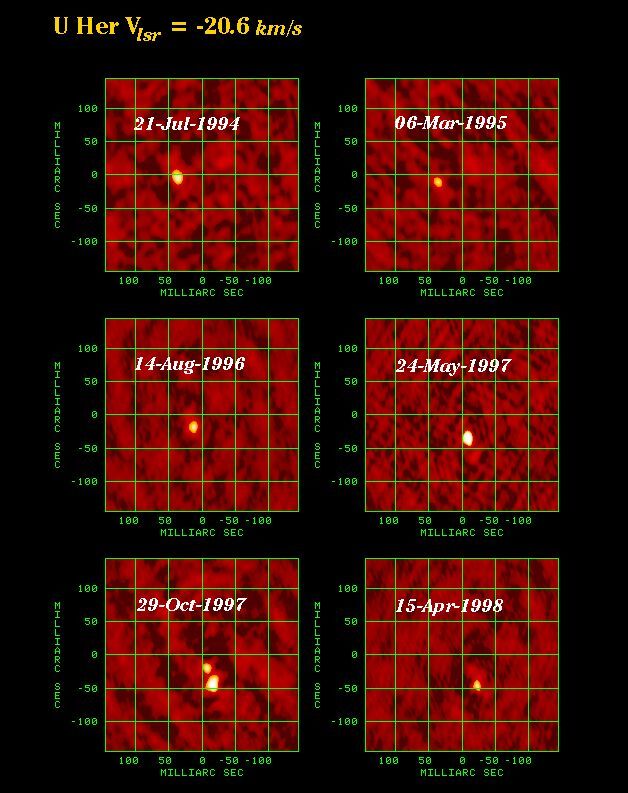OH Masers in U Herculis (HD 148206)
Description
Circumstellar OH masers are found in the envelope around late type stars. The star itself is obscured by the shell. However, the most blue-shifted spot is thought to be amplified emission from the underlying star. This maser spot would then be a bright beacon, necessarily fixed on the stellar position. Using the maser we can thus trace the stellar trajectory. Using phase referenced VLBA observations of U Her we have obtained very accurate positions for the maser spots in a period of over 4 years. This allows us to determine proper motion and even parallax of the star. The pictures above show the motion of the most blue-shifted maser spot over this 4 year period. The proper motion can clearly be seen. We have also compared the positions of the spots with the optical position determined by the Hipparcos sattelite with unprecedented accuracy (U Her is still faintly visible in the optical). As predicted by the theory the position of the most blue-shifted maser spot matches the Hipparcos position to within 15 mas.
Creator
Legacy Astronomical Images
Rights
NRAO/AUI/NSF does not hold full copyright for this image. Contact the archivist for details.
Type
Legacy Astronomical Image
Object Name
HD148206
Photo Credit
H.J. van Langevelde and W. Vlemmings
Investigators
H.J. van Langevelde, W. Vlemmings
Telescope
Very Long Baseline Array (VLBA)
Observation Date
1999-00-00
Type of Observation
continuum
Band
L
Wavelength
20 cm
Frequency
1.4 GHz
Center of Image
RA 16:25:47.470, Dec: 18:53:32.900 (J2000)
Series
Galactic Sources Series
Unit
Stars Unit
Citation
Legacy Astronomical Images, “OH Masers in U Herculis (HD 148206),” NRAO/AUI Archives, accessed June 13, 2025, https://www.nrao.edu/archives/items/show/33504.

